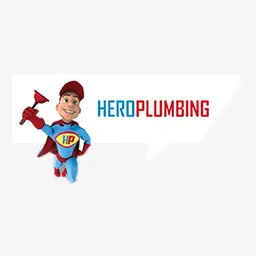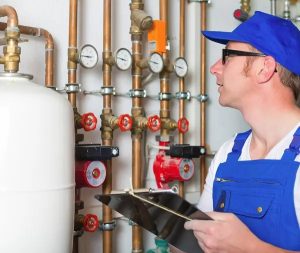Table Of Contents
- Testing Electric Water Heater Thermostats
- Procedure For Testing A Hot Water Thermostat
- Step One: Switch off the power
- Step Two: Find the circuit breaker
- Step Three: Locate the thermostat
- Step Four: Unscrew the cover
- Step Five: Tilt the cut-out flap
- Step Six: Remove the plastic wrapping
- Step Seven: Configure your multimeter
- Step Eight: Examine the reset button
- Step Nine: Unplug the power supply
- Step Ten: Check the top thermostat’s integrity
- Step Eleven: Check the water temperature
- Step Twelve: Make sure the lower thermostat is working
- Step Thirteen: Arrive at a decision
- Replacing An Electric Hot Water Thermostat
- Step One: Switch off the heater’s power supply
- Step Two: Remove the outside access panel as well as the insulation
- Step Three: Remove the thermostat
- Step Four: Insert the new thermostat
- Step Five: Set your new thermostat temperature
- Step Six: Replace everything else you removed
- Step Seven: Run the heater and ensure proper function
- Frequently Asked Questions
- Call A Plumber When In Doubt
Testing Electric Water Heater Thermostats
There are two different heating elements in an electric water heater. One is in the top half of the tank, and the other is in the bottom half. You won’t have any hot water at all if the top electrical water heater thermostat stops working. But, if the lower thermostat stops working, you’ll notice when the water from the tap starts to get cooler.
The best way to decide which of your thermostats needs replacement is to test them all and see which one fails. This article will take you through a quick, precise, and reliable way of testing your hot water thermostat to know what is wrong and what to change.
Procedure For Testing A Hot Water Thermostat
Step One: Switch off the power
Before you start, verify that the power is off! Then, double-check your work. Check again once more. It must be turned off so that you do not harm yourself.
Step Two: Find the circuit breaker
It may be labelled differently depending on who installed the system. But it should be apparent that it is for the heater. However, if you are uncertain, you should call a professional immediately.
Step Three: Locate the thermostat
When you get to your water heater, you should see two panels. One higher up on the device and one lower down. They cover the thermostat and its parts.
Step Four: Unscrew the cover
Remove the top and bottom access covers with your flathead screwdriver. You should see an insulation sleeve for the thermostat.
Step Five: Tilt the cut-out flap
Depending on how it was cut, you may also flip it down. In either case, ensure that it is not obstructing anything.
Step Six: Remove the plastic wrapping
It will sit on top of the thermostat. Using a screwdriver, remove and keep it somewhere safe. Optionally, verify the power with a voltage stick. It is usually prudent to double-check that the water heater is not receiving power.
Put the stick against one of the terminals and watch to see if it starts to burn. If it does, you’re still powered, but if it doesn’t, you’re set to go! Do the same for both the upper and lower thermostats.
Step Seven: Configure your multimeter
Adjust the dial on your multimeter to the lowest ohm setting.
Step Eight: Examine the reset button
A reset button will be located on the upper thermostat. This can trip when the water in the tank overheats for various reasons. This is also known as “power tripping.” Press the reset button if necessary, by pushing it in.
Step Nine: Unplug the power supply
Even though the unit is not powered, you must disconnect the wires to isolate the thermostat. Take note of the wire’s orientation. After that, unscrew the terminals and release the wires with your screwdriver. Repeat for the top and bottom thermostats.
Step Ten: Check the top thermostat’s integrity
This will have several mini-steps. Please follow along and don’t skip them! We’ll need to make sure the upper thermostat is functioning.
Connect your multimeter to the reset terminal
This should be adjacent to the reset button. It is also the terminal with no power lines connected to it.
Place the second lead to the terminal on the left
Keep your initial lead connected to the reset terminal at all times. This is the one that has the power line connected to it.
Take note of the reading from your multimeter
If it reads 1, your higher thermostat is broken and needs to be replaced. It should read 0 ohms or very close to it if it’s in good functioning order.
Place the second lead to the terminal on the right
Remember to keep your initial lead on the reset terminal at all times. You would have connected a power wire to this port as well.
Make a note of your multimeter reading
Again, if it reads 1, there will be no electric continuity. If it reads 0, you’re safe.
Step Eleven: Check the water temperature
Check whether the temperature of the water is lower or higher than the stated value. This will also include mini-steps, so let’s get started!
Connect your multimeter
Connect your multimeter to the left common terminal. This is located in the thermostat’s lower section.
Connect the second lead to the upper terminal
Connect the second lead to the upper terminal of the heating element. As you do this, ensure your initial lead is still connected to the common terminal.
Make a note of the reading from the multimeter
The first measurement will be close to 0 ohms (or even zero) if the water temperature is too low, whereas the second reading will be 1 if the water temperature is too high (no continuity).
Connect the lead to the lower heating element
You should connect the second lead to the lower heating element. Remember to keep your first lead connected to the common terminal.
Make a note of the reading from your multimeter
If the temperature of your water is greater than it should be, the first reading will be 1 (no continuity), and the second will be 0 ohms (or close to it).
Notice if your water temperature is too hot or too cold
When testing the lower thermostat, you’ll need it to compare to the upper one.
Step Twelve: Make sure the lower thermostat is working
When it comes to inspecting the upper thermostat’s integrity, this process will be comparable to the previous one. You should have double-checked to see if any voltage was present before proceeding, and you should also have unplugged the power cables.
Place the probes of your multimeter on the two terminals. The measurement should be 0 ohms if your water temperature is lower than it should be (or close to it). Water that is hotter than usual should register as a 1 (no continuity).
Step Thirteen: Arrive at a decision
If the upper and lower thermostats show different temperatures, you should replace the lower ones. In other words, if the upper thermostat indicates that the water temperature is higher than it should be, but the lower thermostat indicates that it is lower than it should be (or vice versa), your lower thermostat is broken.
Replacing An Electric Hot Water Thermostat
It is rather simple to replace a malfunctioning thermostat. A new one is also inexpensive. Replace both of them even if the fault is with a single thermostat. But first, you must obtain your thermostats from the same vendor.
Another product from a comparable manufacturer will do if something is not available. To replace a faulty thermostat, you need the following tools: a replacement thermostat, a Phillips screwdriver, a digital multimeter or voltmeter, and a flathead screwdriver.
Step One: Switch off the heater’s power supply
You would not want to work with the electricity turned on. So, go to the circuit breaker and turn off the power supply to the water heater.
Step Two: Remove the outside access panel as well as the insulation
Outer access panels on electric water heaters protect the thermostats and supporting elements. Unscrew it to get rid of the insulating pad and plastic cover, but don’t touch the wires.
Step Three: Remove the thermostat
Take a picture of the wiring before removing the faulty old thermostat so you know which wire goes into which terminal when you connect the new thermostat. You can also label the cable. Also, use your multimeter to validate that it is turned off. Then, loosen the screw terminals using a Philips screwdriver and disconnect the wiring.
You can then remove the thermostat from its mounting clips and bracket. However, be careful not to damage the clips.
Step Four: Insert the new thermostat
Install the new thermostat after you get the broken one off the water heater. Place it correctly on the top of the storage tank and connect the proper clips by looking at the picture you took in the last step. Connect the circuit wires to their respective screw terminals and tighten the screws. Inspecting, cleaning, and replacing the heating elements may also be a good idea.
Step Five: Set your new thermostat temperature
Use your flathead screwdriver to set the temperature to your preference once you’re confident the wires are correctly connected and have finished configuring your thermostat. The ideal temperature is 120°F or 48.8 degrees Celsius.
Step Six: Replace everything else you removed
It’s time to swap out the insulators and the access panel to the chamber now that everything is in place. After that, turn on the circuit breaker’s water heater breaker to re-establish electricity.
Step Seven: Run the heater and ensure proper function
You can now turn on your water heater for two hours before running the hot water tap to verify if it adequately heated the water.
Frequently Asked Questions
What are the most common problems with water heaters?
Some of the most common things that can go wrong with your water heater are:
Rust-coloured water
If the water coming out of your faucet is brownish, reddish, or yellowish, it means that some of the components of your water heater tank are corroded and rusted. It is also possible that the corrosion is in your pipes. In any case, you’ll need to consult with a plumber.
Bad smell
If your hot water stinks like rotten eggs, you may have a problem with bacteria in your tank. You may need to replace the anode rod to remedy this. Nevertheless, you’ll need help. A professional plumber should also be called in.
Water leakage
Faulty valves and plumbing connections cause most hot water leaks. Corrosion in the water heater tank or loose elements could be the source of the issue.
It is impossible to repair a corroded tank, so you must purchase a new one instead. You can tighten it back up with an element wrench when the heating element gets loose. Better still, you can go for tankless water heaters.
Weird noise
Your tank may be making noises like rumbling or popping because of boiling water. The water in the tank can boil if there is too much sediment at the bottom.
It’s a simple fix. You should flush the sediment away by draining the tank; if the issue continues, your best bet is to replace the tank.
Is there a universal electric water heater thermostat?
No! Single-element water heaters and double-element water heaters are available. Because they’re not interchangeable, you’ll want to ensure you get the right one for your particular water heater. Also, you can’t switch the bottom and top thermostats on water heaters with two elements; you must use them separately.
The top one is much larger and has more connections than the lower thermostat. You should constantly examine your water heater’s information tag before purchasing a thermostat. Take a few extra minutes now to look over this information, and you’ll save time, money, and stress later.
What causes a hot water heater thermostat to fail?
A heater thermostat can malfunction for a variety of reasons. Most of the time, a broken thermostat or heating element is to blame, but it could also be a broken reset button or a loose electrical connection. Call in a plumber who has experience troubleshooting this type of problem or if you’re baffled about how your thermostat is acting.
Why is my water heater always shutting down?
You’ve adjusted the temperature and double-checked your thermostats to ensure they’re all operating well. But why is the water heater still shutting down? As previously stated, the reset switch integrated into the thermostats is responsible for this.
The reset switch turns off the heater when the water temperature inside the tank becomes too high. Here are a few hypotheses as to why this might be happening.
- The heating element is on its last legs: Your heating element’s integrity may be jeopardised as its ages. As a result, it will not function properly. If this happens, the water in your tank might get too hot, which would cause the reset button to trip. The heater will then shut down as a result of this.
- The ECO (Energy Cut-Off) Switch: The ECO switch, which works in tandem with the reset function, prevents the water from becoming overly hot. It might deteriorate and break over time. Although this would not force the heater to shut off on its own, it is usually an indication of additional issues.
- Poor wiring: If everything else is in working order, the reset switch could be tripping due to a short circuit produced by bad wiring. If this wiring gets wet, directly or indirectly, it’s a big problem that a professional should take care of. Do not try to repair or diagnose the problem on your own. Hire a professional in hot water repairs.
Call A Plumber When In Doubt
We provided an in-depth guide on testing your hot water thermostat when it malfunctions. With this article and a few tools, you can quickly figure out what’s wrong with your heater and fix it, so it works again, saving you some cash. However, there are instances when you need the help of a professional to assist you.
If you have religiously followed the instructions provided in this article and the problem is still not solved, the best thing you can do is to call a Sydney hot water plumber who has the skills and competence to help you with some advanced troubleshooting.











